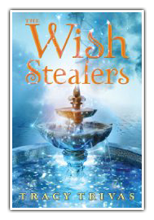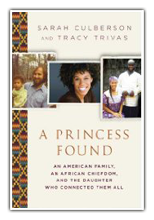I grew up in Connecticut on a cul-de-sac that was filled with kids. In the summer when the air smelled like fresh cut grass, children would emerge from their houses after dinner and we’d play capture the flag or kick-the-can until our parents called us inside—or bats came out. Yup, in the summer tiny brown bats would fly out from the tops of giant pine trees. My mom was terrified that we would get rabies if the bats swooped down and bit us. It never happened to anyone, but that was enough to get me inside!
All the houses in my neighborhood were built on land that was once owned by Noah Webster. His centuries old red saltbox house lay over the brook and up the hill from my house. In the summer we picked juicy wild raspberries and wondered if Noah had planted the original seedlings.
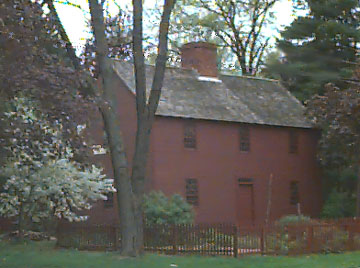
Noah Webster House
Now I live with my family in warm and temperate California, which I love. But there are times when I miss Connecticut–the giant pine trees, weeping willows that cascaded over an entire street, and all the smells of the changing seasons.
For college I attended Dartmouth College in New Hampshire. Winters were so cold in New Hampshire that if my hair was slightly wet after a shower, by the time I reached class, icicles had formed in my hair. 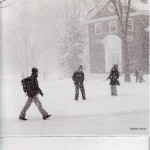
At Dartmouth I majored in Art History and spent two semesters in Florence, Italy, studying Renaissance Art. All of my classes were taught in museums—in front of the paintings that we were studying. My art history professor who led us through the museums walked so fast–darting between paintings–that all her students looked liked a crazed gaggle of geese trying to keep up with her. She explained (what felt like to her students) every painting, sculpture, and monument in the city. By the end of the semester I had holes in the bottom of my boots from walking so much. 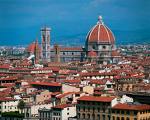 In Florence, I fell in love with spinach gnocchi, the sound of bells ringing out all over the cobblestone city, sunshine filled Sunday mornings, green Cyprus-dotted hills, and art. I don’t have a favorite painting, there would be too many to mention. Though I do have a favorite sculpture.
In Florence, I fell in love with spinach gnocchi, the sound of bells ringing out all over the cobblestone city, sunshine filled Sunday mornings, green Cyprus-dotted hills, and art. I don’t have a favorite painting, there would be too many to mention. Though I do have a favorite sculpture.
Michelangelo died before he completed the series of sculptures he called The Captives. He believed that when he looked at a block of marble, the sculpture already existed—he just had to set it free. These sculptures are half completed, struggling to break out of the marble. To me they are a powerful metaphor about the work and committment it takes to become who we want to be, and to keep trying.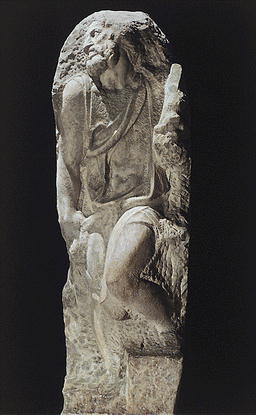
After graduating from Dartmouth, I won a Dartmouth Graduate Fellowship to study Victorian Fiction at Oxford University. In the old dorm rooms, on rainy days, I’d curl up in the window seats as rain drops fell gently on the leaded panes of glass. There I’d read some of the great books of Victorian Fiction—Jude the Obscure, Middlemarch. Many of the old books I loved. Gorgeous, lyrical writing and powerful moving stories filled most of the pages. But other books were so hard to get into–so b-o-r-i-n-g that it felt a bit like eating clumps of sand.
When I came back to America, in need of sunshine and a job, I headed to California where my friend offered to be roommates. I packed up two of the ugliest green suitcases known to mankind (that my mom gave me as she didn’t want them). They have long since been thrown-out, but they looked something like this:

I took a job on an ABC daytime TV show in Audience Relations, meaning I’d help book an audience for a TV show and greet the people in the audience. Meeting guests and being part of a show was fun, but the hours were unbelievably long–getting home at 10pm was an early night.
I soon accepted a job in a school directing a gifted and talented program for students K-8th grade. With these children we studied the solar system and made rocket ships (that really launched) out of film canisters, alka seltzer, and toilet paper rolls. We pressed flowers into beautiful paper books after reading A Secret Garden. I began to write my own materials and books for the children, which eventually led to writing for McGraw-Hill. I wrote 21 workbooks for their creative writing, reading, and math series. Working for McGraw-Hill was like a writer’s boot camp. The deadlines were often only a few months. In that short time I had to come up with different stories. Jane Yolen, the prolific, award-winning author often gives this advice to authors: “BIC.” Butt in chair. Sit down. Practice discipline. These workbooks helped me learn that.
Coming up with stories on demand—often 20 at a time–was fun and hard. I wrote one where a girl’s bedroom carpet kept growing every morning. In another story a boy spills a soda in a piano, and the piano can’t stop hiccupping.
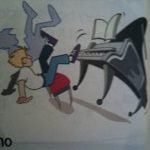
One day I sat at my desk completely out of ideas when I looked at my toaster–and wrote about the toaster that felt unappreciated and wanted to be a DVD player instead.
Soon I began to write The Wish Stealers. Before I wrote it I did research and read many books on alchemy, Carl Jung’s Mysterium Coniunctionis, wishing customs around the world, and Madame Curie: A Biography by Eve Curie. I also reread Ray Bradbury’s Something Wicked This Way Comes for inspiration (one of my favorite books that I reread every couple years). I visited a guitar store to learn about bass guitars. I called the National Weather Service in Kansas to fact check tornadoes–the sky really does turn green. I contacted an astronomy professor at a college in Kansas to make sure the stars that Griffin (my protagonist) sees in her backyard are accurate. Then I listened to music. Or went jogging. Music helps me slip deep inside an idea and be open to new scenes and possibilities. Jogging helps me mull over ideas and achieve more clarity about characters. I hope you enjoy the book!

